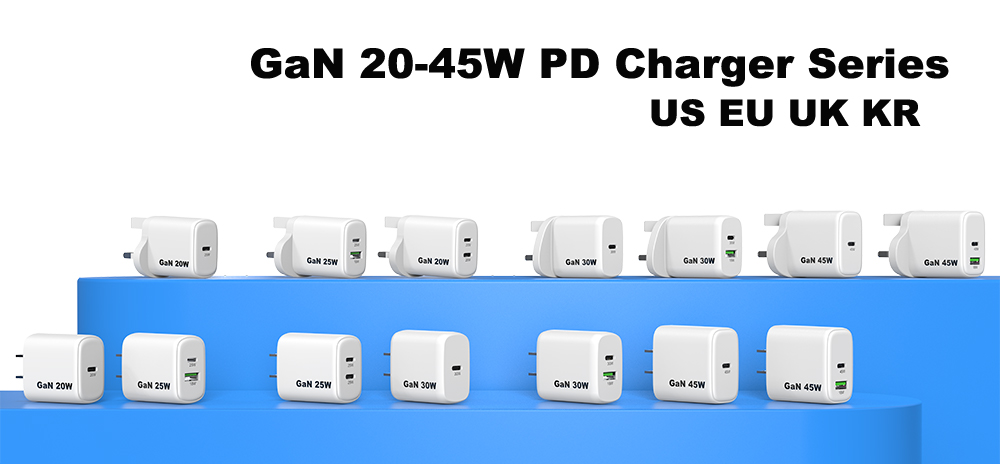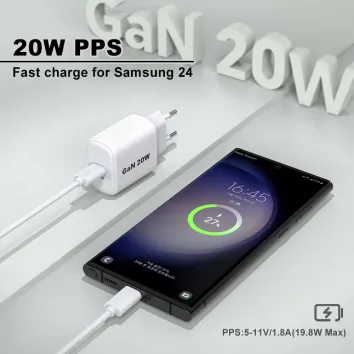Can i Use A USB Charger As a Power Supply? | ZONSAN
With the rise of USB-C PD chargers, GaN fast charging, and multi-device charging stations, more users in Europe and South Korea are wondering:
“Can I use a USB charger as a power supply for other electronics or DIY projects?”
The short answer: Yes, but only under the right conditions.
Let’s explore when it works, when it’s safe, and what you should consider—especially from the viewpoint of a charger factory or OEM charger supplier who understands what goes on inside the tech.

⚙️ What Is a USB Charger and How Does It Deliver Power?
Modern USB chargers, especially PD (Power Delivery) and PPS types, are designed to communicate with the device before delivering power. This negotiation ensures that:
·The right voltage (V) and current (A) are supplied
·The device being charged is protected
·Efficiency and heat are controlled, thanks to GaN or silicon chips
Most quality chargers today—including OEM and custom-made models from manufacturers like ZONSAN—include intelligent power control chips.
✅ When Can You Use a USB Charger As a Power Supply?
Here are the safe and functional use cases in 2025:
| Use Case |
Safe to Use |
Notes |
| 🔋 Charging smartphones, tablets, earbuds |
✅ Yes | Designed for this purpose |
| 💡 Powering small USB devices(e.g,fans) |
✅ Yes | AS long as voltage & current match |
| 💻 Using with Raspberry Pi or Arduino | ⚠ Caution | Use a PD charger or one that supports fixed 5V output |
| ⚡ DIY electronics | ⚠ Caution | Must check exact voltage & current; use voltage step-down modoules if needes |
| 🖥 Monitors, laptops | ✅ If PD Supported | Must use a PD charger rated for the device's voltage(e.g.,20V for laptops) |
⚠️ When Not to Use a USB Charger As a Power Supply
USB chargers are not universally compatible with all appliances.
Avoid using them for:
·High-power appliances (like 12V motors, industrial tools)
·LED strips that need stable current without load detection
·Devices without USB power regulation protection
For these, a dedicated regulated power supply is more appropriate.
🧠 Why Device Communication Matters (PPS, PD & Triggering)
Unlike traditional DC adapters, USB-C PD or PPS chargers negotiate voltage levels. A PD charger might offer:
·5V / 3A
·9V / 2.22A
·12V / 1.67A
·15V / 2A
·20V / 3A
But without proper handshake protocols (like a USB-C trigger board), the charger may default to 5V output only, limiting its usefulness for high-power projects.
🔍 Tip from OEM charger manufacturers: Some chargers support “fixed” voltage modes without handshake—for hobby projects, you may want to look for these options.
🏭 OEM & Factory Charger Design Perspective
·As a USB charger manufacturer, here are some pro tips:
·Good OEM chargers include multi-protocol support (PD, QC, AFC, SCP)
·Industrial chargers can be customized for 5V-only or fixed 12V modes
For projects requiring reliable USB power, look for GaN chargers with stable voltage output and built-in protection ICs
🧑🔧 Recommended Use Cases for USB Charger Power Supply
Project Type Recommended Charger Type
Raspberry Pi 4 —— USB-C PD 5V 3A or fixed 5.1V
Arduino Projects —— 5V 2A wall charger (regulated)
DIY LED lighting —— Fixed 12V USB-C charger with trigger board
Laptop Power Backup —— 65W–100W PD charger (GaN preferred)
Multi-device Setup —— Desktop charger with smart output management
📈 Related Blog Posts (Internal Links for SEO Boost)
🔗 How Fast Chargers Work & Why They Are Safe
🔗 What Is the Lifespan of a GaN Charger?
🔗 Can You Charge A Switch with A Phone Charger?
🔚 Conclusion: Can You Use a USB Charger As a Power Supply in 2025?
Yes, but make sure:
·The voltage and current match your device requirements
·You’re using a quality charger (preferably PD, GaN-based)
·You avoid risky use cases (no motors or unstable loads)
As USB-C and GaN continue to dominate the European and Korean charger markets, using a USB charger as a power supply is more common than ever—as long as you do it smartly.

Read More

Read More